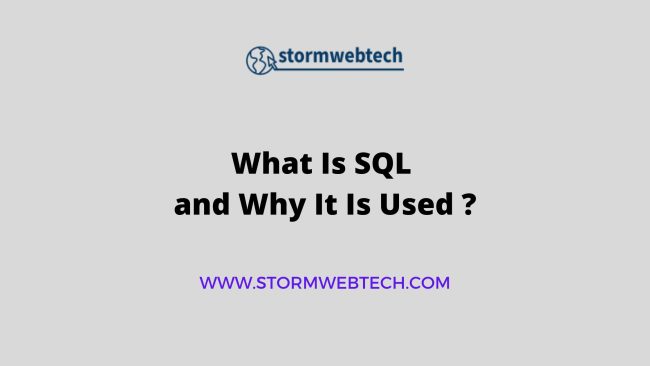Structured Query Language (SQL) is a programming language that is used to manage and manipulate relational databases. SQL is the standard language used by most of the relational database management systems (RDBMS) for creating, modifying, and querying databases. In this article, we will discuss SQL and its significance in today’s world.
What is SQL (Structured Query Language) ?
SQL is a domain-specific programming language designed to manage and manipulate data stored in relational databases. SQL can be used to perform various operations on a database such as inserting data, modifying data, querying data, and deleting data. SQL can also be used to create and modify database objects such as tables, views, indexes, and stored procedures.
SQL was first developed in the early 1970s by IBM as a way to manage their database systems. Since then, SQL has become the standard language used by most of the RDBMS. SQL is a declarative language, which means that the user specifies what they want the database to do, rather than how to do it.
Why is SQL used ?
SQL is used for various reasons, including :
Data manipulation -: SQL is used to manipulate data stored in a database. SQL can be used to insert, update, delete, and query data.
Data definition -: SQL is used to define the structure of a database. SQL can be used to create and modify database objects such as tables, views, indexes, and stored procedures.
Data control -: SQL is used to control access to data stored in a database. SQL can be used to grant or revoke permissions to users or groups.
Data integrity -: SQL is used to ensure data integrity in a database. SQL can be used to enforce constraints such as unique, primary key, foreign key, and check constraints.
Data security -: SQL is used to ensure data security in a database. SQL can be used to encrypt data, grant or revoke permissions to users or groups, and audit database activity.
SQL Syntax
SQL syntax consists of a set of statements that are used to manipulate data stored in a database. The following are some of the basic SQL statements :
SELECT -: Used to query data from a database.
INSERT -: Used to insert data into a table.
UPDATE -: Used to update existing data in a table.
DELETE -: Used to delete data from a table.
CREATE -: Used to create a new table, view, index, or stored procedure.
ALTER -: Used to modify the structure of an existing table, view, index, or stored procedure.
DROP -: Used to delete an existing table, view, index, or stored procedure.
SQL Examples
SELECT Statement -:
The following SQL statement retrieves all records from the Customers table :
SELECT * FROM Customers;
INSERT Statement -:
The following SQL statement inserts a new record into the Customers table :
INSERT INTO Customers (CustomerName, ContactName, Country)
VALUES (‘Microsoft’, ‘John Doe’, ‘USA’);
UPDATE Statement -:
The following SQL statement updates the ContactName field of the record with the CustomerID of 1 in the Customers table :
UPDATE Customers SET ContactName = ‘Jane Doe’
WHERE CustomerID = 1;
DELETE Statement -:
The following SQL statement deletes the record with the CustomerID of 1 from the Customers table :
DELETE FROM Customers WHERE CustomerID = 1;
SQL is a powerful and flexible language that is used to manage and manipulate data stored in relational databases. SQL is used by many different types of organizations, from small businesses to large corporations. SQL is a crucial tool for data analysts, database administrators, and developers who work with relational databases. SQL is likely to remain an essential tool for managing and manipulating data in the future as well.
Read More -:
